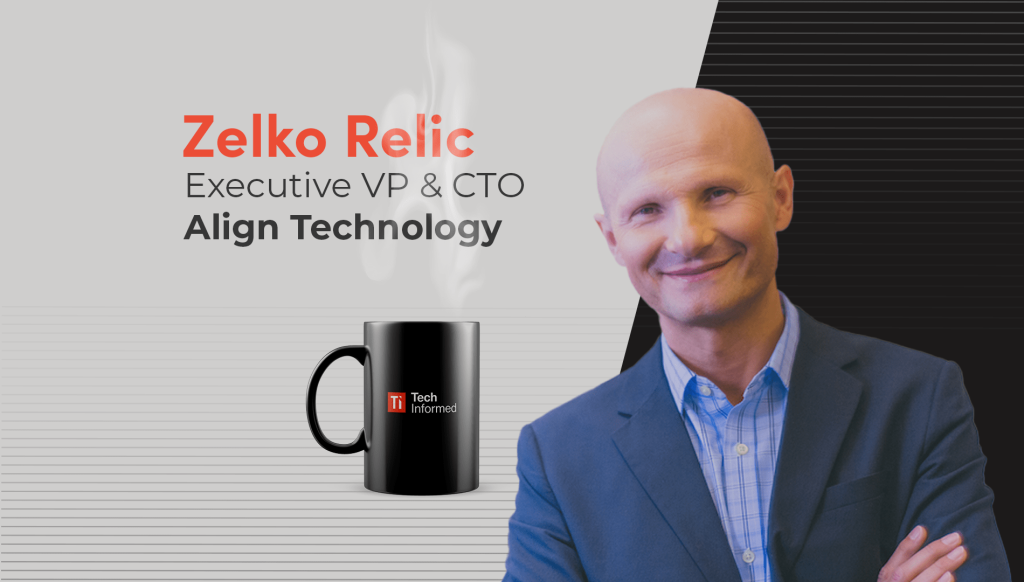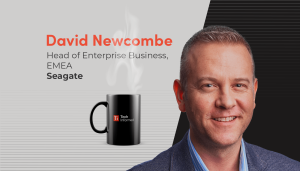

A coffee with… Zelko Relic, executive vice president & CTO, Align Technology
Zelko Relic is the executive vice president and chief technology officer at Align Technology – the Arizona-based firm behind clear teeth aligner brand Invisalign, which has been straightening teeth—for more than 18 million patients—since 1997.…
Zelko Relic is the executive vice president and chief technology officer at Align Technology – the Arizona-based firm behind clear teeth aligner brand Invisalign, which has been straightening teeth—for more than 18 million patients—since 1997.
TI talks to Relic about his firm’s ongoing digital transformation, from AI applications to 3D scanning.
Plus, Relic delves into his own journey in tech – where he cut his teeth at Siemens after pivoting from semiconductors and industrial automation.
Where did your interest in healthcare and tech begin?
I started in engineering and technology, and never really moved away. I enjoy innovation, developing new technology, and then translating that into products and solutions. I have changed industries though – from semiconductors to commercial business services, industrial automation, and healthcare. Healthcare is, by far, my favourite sector.
How has the technology behind Invisalign evolved since you began?
It’s evolved significantly, thanks to ongoing innovation. Initially introduced as an alternative to traditional wire and bracket braces, the Invisalign treatment consists of clear aligners made from a proprietary material called SmartTrack, developed after several years of research.
Over time, Invisalign has introduced other cutting-edge technologies, such as SmartForce attachments, which apply precise forces to achieve predictable tooth movements, and SmartStage technology, which sequences tooth movement for optimal results.
Our most recent addition allows for certain tooth movement without traditional attachments, offering greater comfort, efficiency, and aesthetic appeal.
This continual evolution of technology has allowed Invisalign to offer patients more effective, discreet, and comfortable orthodontic treatment options.
How has AI impacted on dentistry?
AI has certainly transformed patient care and customer experience in the dental industry. We’ve been integrating digital solutions into our operations over the last 27 years and we aim to be at the forefront in applying AI and new technologies to revolutionise dentistry.
For instance, by leveraging large amounts of patient data sets – from over 18 million Invisalign cases – we can customise and fine-tune the AI models we use. As a result, this extensive dataset allows for more accurate and efficient clinical diagnosis, treatment planning and visualisation.
How do you stay competitive in the field you are in?
I aim to foster a culture of experimentation and openness to new approaches. Many of our technologies take years to develop, but we are committed to exploring new possibilities and continuously testing new ideas.
Even when certain innovations don’t succeed, they offer valuable insights and learning opportunities that drive future progress. This forward-thinking mindset allows us to innovate at a pace comparable to businesses outside of healthcare, ensuring that we remain competitive and contribute to advances in dentistry through cutting-edge technology.
What other technologies in dentistry excite you?
Additive manufacturing, or 3D printing excites me. It is transforming industries and creating new opportunities for innovation. At Align, we have utilised 3D printing from the very beginning – in fact, we have the world’s largest 3D printing operations, used to create approximately one million customised Invisalign aligners per day.
In the last decade, substantial investments have driven the evolution of 3D printing across different sectors.
In the dental industry, more companies are leveraging 3D printing, along with new materials, machines, and processes specifically designed for dental applications, and this is expected to continue accelerating in the coming years.
What’s the future for technology and teeth – is there much to smile about?
We anticipate the development of ‘smart’ aligners with built-in sensors to monitor oral health, as well as overall health, as many health indicators can be tracked through the mouth.
We strongly emphasise that AI could never replace the expert role of dental professionals, but tele-dentistry allows for a combination of in-person visits as well as at-home care – reducing the need for frequent trips to the dentist’s office.
As technology advances and new tools are developed, doctors will be able to oversee treatments more closely, monitor patient responses to treatments remotely, and be alerted if any issues arise.
How do you take your coffee?
I like espresso, but with milk. Cappuccino is my favourite, which I enjoy with my breakfast. After lunch I will have a caffe macchiato.
I have an espresso machine at home, traditional type with a portafilter, so grinding fresh Arabica beans and making coffee is a fun part of my morning routine, when I don’t travel.











